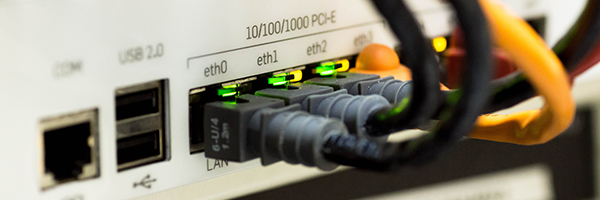
Watch my YouTube video: The rally narrows–or does it?
I’m starting up my videos on JubakAM.com again–this time using YouTube as a platform. My seventieth YouTube video “The rally narrows–or does it?” went up today.

I’m starting up my videos on JubakAM.com again–this time using YouTube as a platform. My seventieth YouTube video “The rally narrows–or does it?” went up today.

In my YouTube video posted today I dismissed (pretty much) my worry that this rally was getting narrower and therefore closer to a nasty end. Nvidia (NVDA), up 8.85% at the close ) I noted had dragged a few chip stocks with it after the company reported a significant earnings beat and increase in guidance yesterday. For the day Qualcomm (QCOM) was up 1.63% and Advanced Micro Devices (AMD) ahead 1.86%. But stocks as a whole didn’t join in and some recent bellwether stocks actually retreated with Coca-Cola (KO) off 0.96%, Chipotle Mexican Grill (CMG) down 1.87%, and Disney (DIS) lower by 1.11%. Not good. What you’d like to see as more stocks join in–the rally gets broader–as prices go up if you’re looking for evidence that a rally might continue for a while. But, I noted in my video, not all is lost. Big tech stocks, which have largely been left on the sidelines in the rally, were up strongly today wit Amazon (AMZN) gaining 3.78% and Apple (AAPL) higher by 3.05%. If this group starts to participate the rally would be likely to have another leg. However, that’s not my only worry about this rally. I’m seeing evidence that the gains being racked up by stocks such as Nvidia, Qualcomm, and Apple are based on increasing vague speculation about trends that are way, way off in the future.

On Saturday I posted that Nvidia’s (NVDA) earnings report on November 17–that is today–and the market reaction to the company’s quarterly earnings report would tell us a lot about market sentiment and the magnitude of any year-end, market melt up rally.
Wall Street analysts were projecting that the company would announced earnings of 95 cents a share for the quarter that ended in October. That would be a huge 58% increase from the 60 cents a share reported for the October 2020 quarter, I
But, I worried, that much of that number was already in the share price. The stock was up 47% in the last month and 133% for the year to the November 15 close. Would the stock drop if all the company did was meet expectations?

I expect the market reaction to Nvidia’s (NVDA) quarterly earnings report on Wednesday, November 17, to tell us a lot about market sentiment and the magnitude of any year-end, market melt up rally.

When I started Special Report for how to Buy on the Dip, What to Buy on the Dip and When to Buy on the Dip I was only looking to have three strategies (and 10 picks). The more I look at the current market, the more complex it seems with more moving parts that could generate an Oh, No! moment for this stock or that stock.Which is why, in my last update to this Special Report, I added a fourth strategy, one I’m calling “The China bomb” and four more picks to my Buy on the Dip Special Report. Today, I’m going to complete this Special Report with this post on the strategy that was, initially, going to be Strategy #3 (when there were just three strategies in the report.) Because I inserted “The China Bomb” strategy as a new Strategy #3, the original Strategy #3, Buy on the Regret, got bumped to today’s Strategy #4.

The dominoes keep tumbling and I think we’re now set up for one of those extremely volatile market melt ups through early January. Why do I believe that? And what’s a melt up look like? Glad you asked.

Yes, we want to buy on the dip. Whenever we get a significant dip. (And significant to me is 5% or more in the major indexes–and 10% or more in specific sectors.) But, we need new strategies for buying on the dip that take into account the market’s valuation problem, the central bank tightening that looks to be in the cards, and the real possibility of a dip in growth below forecasts in 2022. I’ve got fouir strategies to suggest for buying in this market on these dips. And 14 picks to use to execute those strategies.

Today, September 27, I’m making Nvidia (NVDA) my fifth pick in my Special Report: 10 Greatest “Savings Account Stocks.” You’ve probably noticed that now all five of the first five picks for this list of 10 Greatest “Savings Account” Stocks are technology stocks. Microsoft. Taiwan Semiconductor. Applied Materials. Adobe. And now Nvidia. And it’s only reasonable to ask Why?

You know how a savings account works, right? You deposit money in a bank. The bank uses your deposit to make a loan. Out of its profits, the bank pays you interest. That interest payment is a pittance today. 0.5% if you’re very, very lucky. But the national average is just 0.06%. What I’m calling “savings account stocks” work the same way that a bank savings account does. (Share prices do fluctuate but in the long run I’d argue that these stocks are as safe as a bank savings account.) And they pay an annual return that’s 10X–or much, much more–higher–than the paltry 0.5% now offered by the highest yielding savings accounts. How do these stocks work and why are they so much better than bank savings accounts? You–investors–give the company capital by buying newly issued shares or company bonds. The company invests that cash in making widgets or apps or whatever. And the company returns the bulk of the profits from those investments to the owners of its stock in the form of dividends, stock buybacks, and the appreciation in share price that results from the growth of the company’s business over time. I’m posting the first of my 10 Greatest “Savings Account Stocks” today and my Special Report will name a total of 10 great “savings account stocks” in posts over the next week. Today’s Greatest Savings Account Stock Pick: Microsoft (MSFT). The average annual return on Microsoft shares has been 28% over the last 10 years. Beats that 0.5% on a savings account, no?

This COMPLETE version consolidates all the 3 parts, 3 buckets and seven picks posted serially for this Special Report

Yesterday I started giving you specific picks so you can start to fill these buckets. I started with the short-term bucket, the most challenging of the three since it requires you to confront the current paucity of assets throwing off yields of even 2% head on. The goals for this bucket were maximum achievable safety since you don’t have much time in this bucket to recoup any temporary losses, a yield that’s as high as possible–anything over 3% these days is gravy. Remember that the higher the yield you can produce from this bucket, the less risk you’ll need to take in your portfolio, and predictable payments in actual cash (or cash equivalents). Remember that you want to be able to spend the returns from this bucket. Today I’m going to give you picks for filling out the third, the long-term, bucket.

Nvidia (NVDA) finally began trading at a price adjusted for the stock’s announced 4 for 1 split. At the close the shares traded at $194.10, a gain of $7.98 a share (or a pre-split $31.92 gain), up 4.29% on the day. The solid move higher bodes well for Nvidia’s future price trend since it argues that there are a significant number of investors who still want to climb on board.